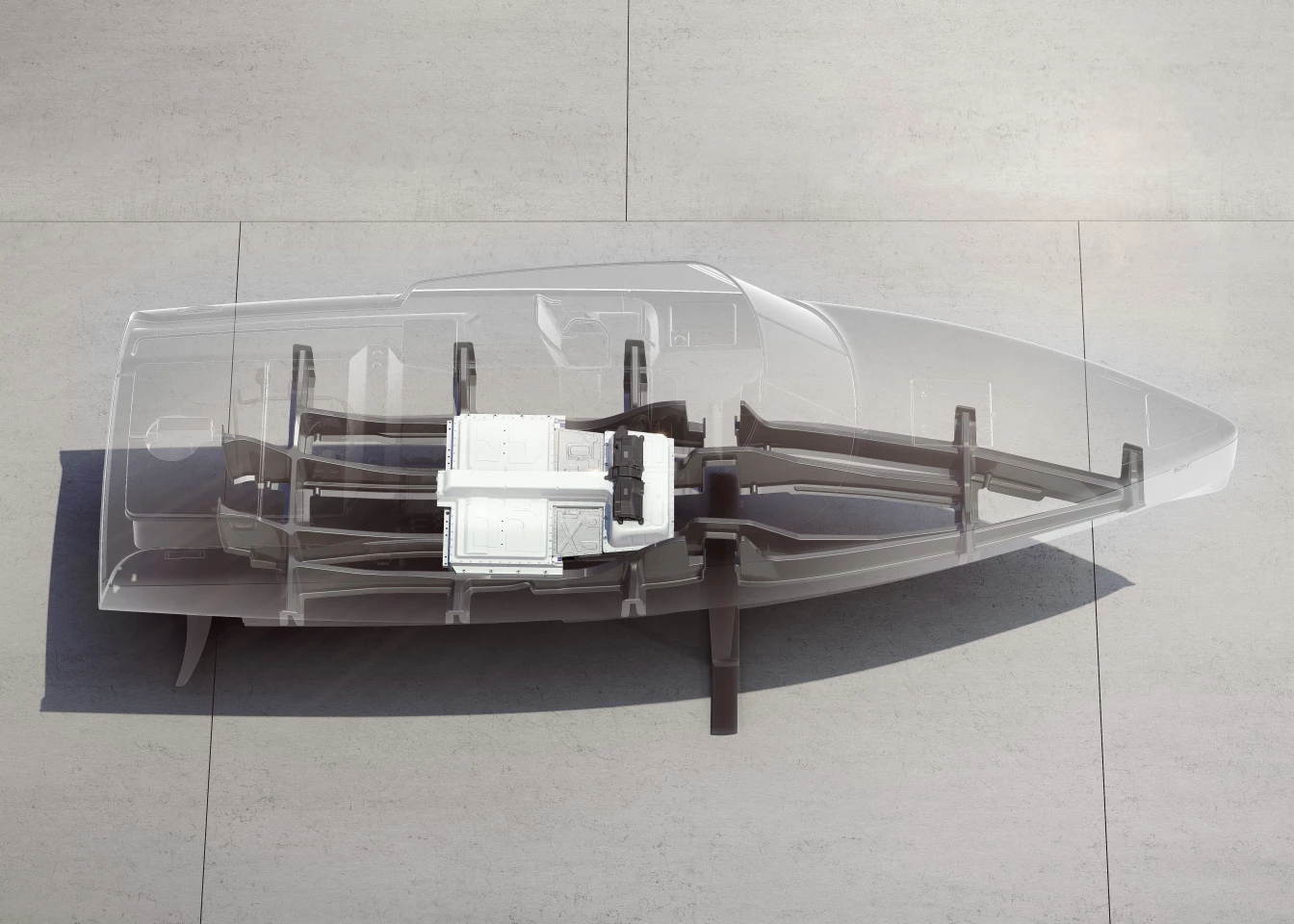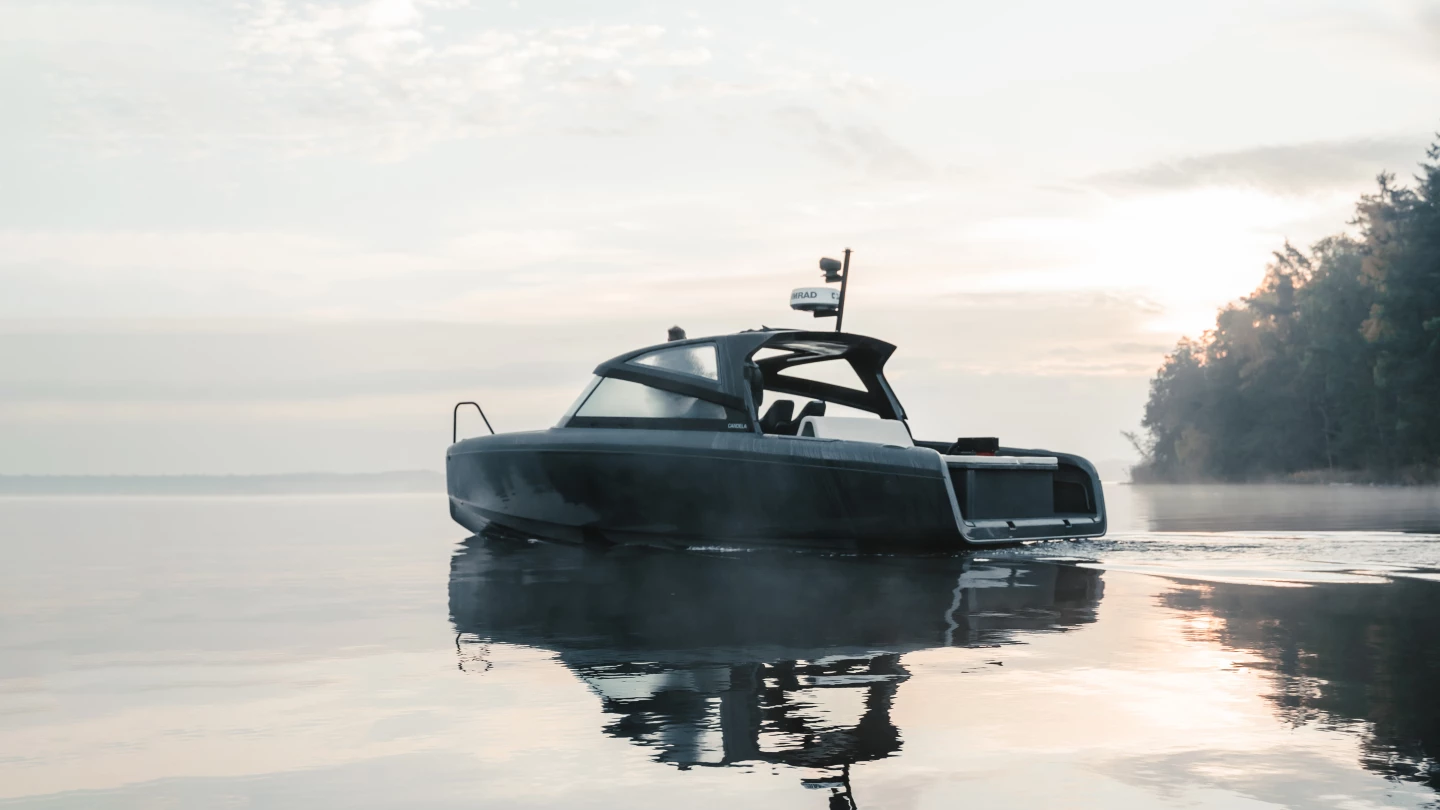Last year, luxury electric car brand Polestar agreed to supply batteries to foiling e-boat maker Candela. Now the first fruit of that deal has been revealed, a new version of the C-8 leisure craft that's now good for a per-charge range of 57 nautical miles.
The C-8 "powered by Polestar" edition will replace Candela's current 44-kWh production model when it goes into production this coming (Northern Hemisphere) spring.
The foiling electric boat retains much from the current model, including the computer-guided retractable C-Foil wings and pod motor that allow it to "fly" above the surface of the water for a relatively quiet, efficient and smooth ride – without leaving much wake behind it.
Its internal layout has been redesigned, however, to accommodate the same 69-kWh battery module and DC fast-charging technology found in the Polestar 2 five-door fastback EV.

At a cruise speed of 22 knots 25 mph), the revised C-8 has an expected range of up to 57 nautical miles (65 miles/105 km) – plus an extra 3 nautical miles in reserve to limp home at 4 knots if needed – which makes it the longest-range production electric boat, according to Candela.
"This collaboration means that the C-8 can travel to destinations previously only reachable by combustion-engine boats," said company CEO and founder, Gustav Hasselskog. "The Candela C-8 powered by Polestar marks a significant breakthrough for electrification at sea."
Candela quotes usage data from European boat-sharing service Apagi, which reveals that some 95% of day trips undertaken by its members clock up less than 50 nautical miles, which should be "well within the range of the Candela C-8."

Elsewhere, the new 8.5-m-long (28-ft) C-8 benefits from lightweight carbon fiber construction, the interior is designed to sleep a small family, a tinted hatch above allows light to filter through, and the foiling boat can be optioned with a premium sound system sporting six speakers plus a subwoofer.
It's being made available in hard-top, day cruiser or T-top configurations. The C-Pod motor is reported to output 75 kW (100 hp) at takeoff, and operates at 23 kW (30 hp) when foiling. And the top speed is given as 27-knots.
The order books for the C-8 powered by Polestar are open now, with the price remaining the same as before at US$395,000. The video below has more.
Source: Candela









